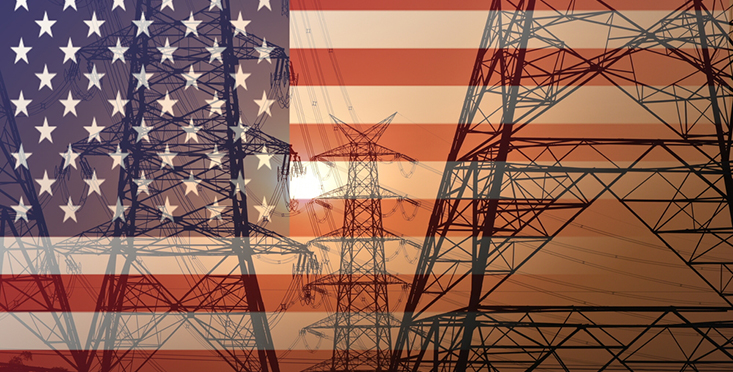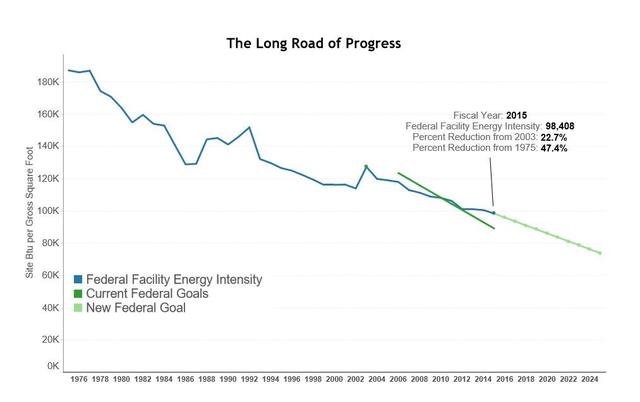Looking Back on Eight Years of Progress in Energy Efficiency
Let's Save Energy
Alliance to Save Energy's Blog

As we look ahead to the swearing in of President-elect Donald Trump next week, we pause to reflect on the accomplishments of the last eight years under President Obama in continuing a bipartisan tradition of supporting energy efficiency through smart federal policy. Dating back to President Ronald Reagan, who signed the first efficiency standards into law in 1987, every administration – Democrat and Republican – has supported efficiency, including major gains under President George W. Bush. Like his predecessor, President Obama has been a champion of energy efficiency, and as he prepares to leave the White House, we extend our gratitude for the significant progress we’ve made under his tenure. Here are some highlights:
1. Appliance and equipment standards
The Obama administration completed a total of 45 appliance, equipment and lighting efficiency standards that will deliver the following benefits:
● Save 44 quads of energy through 2030, enough to power 1.2 billion homes for a year
● Save consumers and businesses $540 billion on their utility bills through 2030
● Reduce harmful and costly pollution, including CO2 emissions by about 180 million metric tons in 2025

Moving into 2017 and beyond, efficiency standards have a bright future and we expect to see them continuing to drive innovation, economic growth environmental improvements and improved energy resiliency.
2. Building codes and infrastructure
A long-standing goal here at the Alliance has been to improve the efficiency of American commercial, institutional and multifamily buildings and industrial plants by 20% or more over ten years. Under the Obama administration, we’ve seen promising steps towards that goal, with more than 310 organizations - representing more than 4.2 billion of commercial and industrial real estate - committing to improving their energy efficiency. As of 2015, 135 partners shared energy performance results for more than 34,000 properties, demonstrating that we’ve met our goal of 20% savings (or more!) at over 5,500 properties. As of 2015, we’ve seen:
● Cumulative energy savings of 160 billion Btu
● Cumulative cost savings of $1.3 billion
● Cumulative avoided CO2 emissions of 10 million metric tons
In addition to buildings, the administration set a goal to reduce energy intensity for U.S. plants by 25% within 10 years. This applies to 179 manufacturing, water and wastewater facilities spread across all 50 states, representing 11.4% of total U.S. manufacturing footprint. The energy reduction resulted in a cumulative cost savings of $3.1 billion through 2015.
Last but not least, the Obama administration has played a pivotal role in reducing the amount of energy used by federal agencies and facilities across the country. In 2015, federal agencies saw an energy intensity reduction of 36.6% from 2008. New goals set by the administration saw the reduction of greenhouse gas emissions from energy use in federal agencies by 18% since 2008.

3. Corporate Average Fuel Economy (CAFE) standards
The CAFE regulations, first enacted in the wake of the oil embargo in 1975, were intended to improve the average fuel economy of cars and light trucks. Under the Obama administration, officials have finalized standards for the fuel economy that will add the equivalent of 54.5 miles per gallon for cars and light-duty trucks by Model Year 2025. Combined with previous standards set by the administration, this addition nearly doubles the fuel efficiency of those vehicles compared to the new vehicles currently on the road. In total, the administration’s national program to improve fuel economy will:
● Save consumers more than $1.7 trillion at the gas pump (comparable to lowering the price of gasoline by $1 per gallon by 2025)
● Reduce U.S. oil consumption by 12 billion barrels
● Cutting greenhouse gas emissions from cars and light trucks in half by 2025
Beyond CAFE regulations for cars and light-duty vehicles, the administration has set innovative standards that will generate the first increase in the fuel economy for heavy- and medium-duty vehicles by 2018. This includes a requirement for heavy-duty pickup trucks and vans to become 2.5% more efficient each year between 2021 and 2027, and a requirement for other heavy-duty vehicles (such as tractor-trailers, delivery trucks and school buses) to have 25% lower carbon emissions and fuel consumption. Once these standards are finalized, they’ll help save nearly $170 million in fuel costs.
4. American Recovery and Reinvestment Act (ARRA) funding
Finally, the bipartisan ARRA package enacted during President Obama’s first term - containing extensive funding for science, engineering research, infrastructure and more - has played a significant role in increasing funding for energy efficiency projects. ARRA investment has contributed $19.9 billion for energy efficiency initiatives, which is projected to help save over 400 million MMBtus of energy over the next four decades - the equivalent of annual energy consumption for 400,000 homes!
Additionally, ARRA support helped improve residential energy efficiency by weatherizing over 800,000 homes, leading to over one million homes being weatherized between 2009 and 2012 with federal support. ARRA investments also helped lay the groundwork for a transition to cleaner and more energy efficient transportation system, with over $18 billion allocated towards cleaner transportation.
Like its predecessors, the Obama administration has taken tremendous steps forward on energy efficiency - from kitchen appliances to tractor trailers, manufacturing plants to federal agencies. We at the Alliance are grateful for all the work this administration has done - and we are excited to see how energy efficiency progress continues under the next administration.
RECENT BLOG POSTS
STAY EMPOWERED
Help the Alliance advocate for policies to use energy more efficiently – supporting job creation, reduced emissions, and lower costs. Contact your member of Congress.
Energy efficiency is smart, nonpartisan, and practical. So are we. Our strength comes from an unparalleled group of Alliance Associates working collaboratively under the Alliance umbrella to pave the way for energy efficiency gains.
The power of efficiency is in your hands. Supporting the Alliance means supporting a vision for using energy more productively to achieve economic growth, a cleaner environment, and greater energy security, affordability, and reliability.



